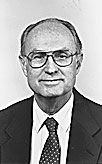From the Editor Emeritus / John F. Fink
Does kneeling during prayers really matter?
 (Thirteenth in a series)
(Thirteenth in a series)
I consider this column the least important in this series on prayer.
I wouldn’t have written it except that posture while praying seems to be important to some people. Whether the congregation should kneel or stand during the Eucharistic Prayer during Mass seems to really bother some people. Apparently, some people have the idea that kneeling is the “approved” position for praying.
Even C. S. Lewis favored kneeling. In Letters to Malcolm, he wrote: “The body ought to pray as well as the soul. Body and soul are both the better for it.” Then he went off into a digression before picking up his thought again: “The relevant point is that kneeling does matter, but other things matter even more. A concentrated mind and a sitting body make for better prayer than a kneeling body and a mind half asleep.”
I don’t think that kneeling does matter, but I agree that other things matter more and that a concentrated mind is more important. I don’t think we should quibble about bodily postures during prayers.
Apparently, some people concentrate better while kneeling. The late Pope John Paul II knelt while praying with tremendous concentration. Many of the mystic saints knelt and were sometimes elevated from the ground while they were praying.
That’s great. But I refuse to think that one must kneel in order to pray devoutly. If you’re going to concentrate your mind on prayer, I think that you have to be in a comfortable position. When I’m uncomfortable, I think too much about my discomfort, and I get uncomfortable after kneeling for any length of time.
Particularly when I’m meditating, I sit with my eyes closed. Admittedly, that can be carried to extreme if you get so comfortable with your eyes closed that you fall asleep, but normally I can concentrate my mind better when I’m sitting than I can when I’m kneeling.
In his Introduction to a Devout Life, St. Francis de Sales told Philothea that it is neither necessary nor expedient to perform all her devotions on her knees. He told her she could do it while walking outside or even in bed.
On a related topic, it’s interesting the way the practice of holding hands during the Our Father at Mass has become common. With no directives from liturgists, the practice has become widespread. People recognize the practice as a symbol of unity while praying the prayer Jesus taught to us. The official Church has never approved or disapproved the practice, but I can’t imagine why it would disapprove.
Some of those not holding hands with their neighbors prefer the orante position. This is the classical attitude of prayer, standing with one’s hands lifted up, with palms facing outward. This posture is meant to convey the idea that, just as the hands are raised, so is the orante’s mind and heart raised to God. I’ve adopted that position during the Our Father at Mass unless a neighbor offers his or her hand. †
 (Thirteenth in a series)
(Thirteenth in a series)